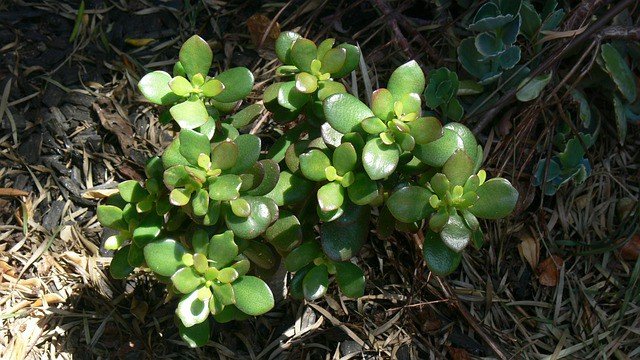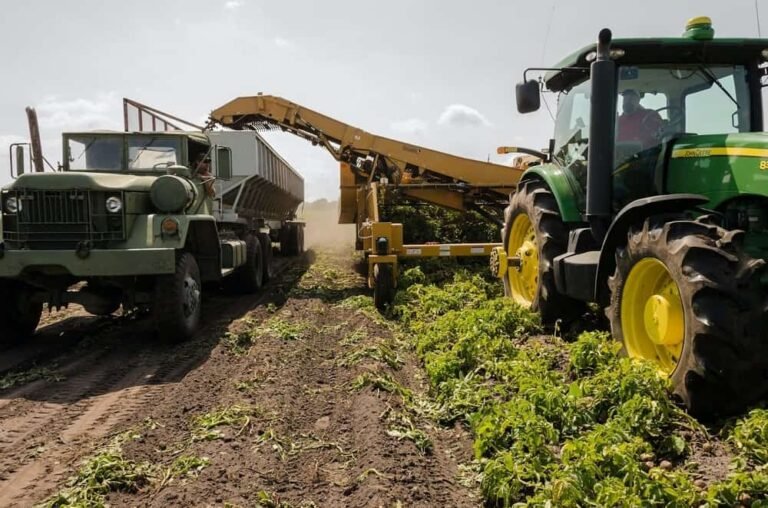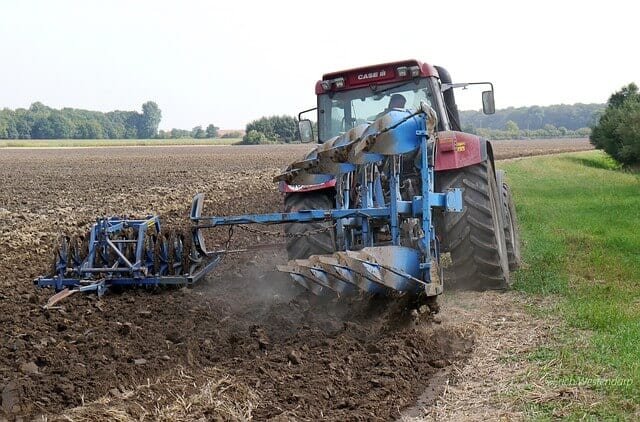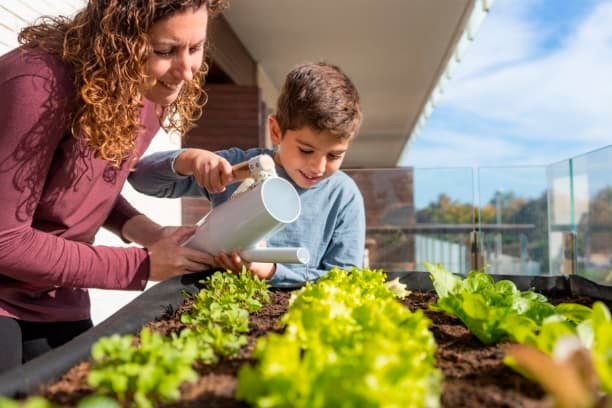Grow Succulents Successfully Indoors and Outdoors in 7 Easy Steps

Have you been looking for the perfect step-by-step guide that explains how to grow succulents successfully?
Do you even know the plants that can be classified as succulents?
Whatever it is you want to know about succulents, this article will provide you with answers.
You will learn about all the plants that fall under succulents.
You will also learn about how to grow succulents step by step.
In addition, you will gain knowledge about the diseases and pests that affect succulents and how to control them.
If you carefully follow and apply all you learn in this article, you will get good results.
Are you ready to get the complete step-by-step process of growing succulents?
If yes, then let’s get started.
What are succulents or succulent plants?
Succulent plants, also called succulents, are plants that have thickened, fleshy, and engorged parts.
Their fleshy parts are usually used to retain water in arid climates or soil conditions.
The word succulent comes from ‘sucus,’ meaning ‘juice’ or ‘sap’ in Latin.

Types of succulents
Types of succulents include;
- Aeonium
- Agave
- Aloe
- Crassula
- Echeveria
- Euphorbia
- Gasteria
- Graptopetalum Hybrids
- Haworthia
- Kalanchoe
- Mammillaria
- Opuntia
- Sedum
- Sempervivum
- Senecio
If you love reading about succulents, then you also like to read about How to grow tomatoes step-by-step.
Benefits and uses of succulents
- They are used as houseplants because of their beauty and attractiveness.
- Succulents are used in the pharmaceutical industry to produce drugs.
- Succulent plants can be used to treat burns, cuts, and aches.
- They help purify the air.
- You can grow succulents for their medicinal properties.
- They have been proven to help increase concentration and work productivity.
- Succulents also tend to increase focus.
- Indoor succulents produce oxygen, thereby improving the air quality.
Benefits of edible succulents to the body
Some of them are edible, and they are beneficial to your health.
- Some succulent plants are antiviral.
- They are high in antioxidants
- Succulents help lower blood pressure
- They can also reduce body fat and cholesterol levels
- Succulent plants are full of micronutrients.
- Eating them helps to prevent some diseases.
- They are packed with vitamins.

Ways you can plant succulents.
You can plant succulents in many ways.
They include;
- Seeds
- Stem cuttings
- Leaf cuttings
Growing succulents from seed
You can plant succulents using their seeds.
However, most people do not like to plant with seeds.
The reason is that it is the slowest way to plant succulents.
It takes about three years for the succulents to produce seeds.
It also takes about three months to three years for it to germinate.
Growing succulents from stem cuttings
Propagation through stem cuttings is the easiest way.
Cut the stem to the length you want.
Peel off all the leaves on the bottom, leaving some up.
Place it on the pot with your potting soil.
Continue to water until you see the stem begin to grow.
This activity should take about 2 weeks to 4 months.
After this, you can plant it properly in a new pot.
Hey! Did you know that you can grow cassava from stem cuttings?
Read this article about How to Grow Cassava Step-By-Step to get the full details.
Growing succulents from leaf cuttings
You can do this by cutting a leaf-covered section of your plant from the top.
Let the cutting be at least 3 inches long.
You can also use a leaf.
Pluck one leaf from either your cuttings or from the parent plant.
How to grow succulents step-by-step
Step 1: Selection of suitable space for succulents.
After deciding to grow succulents, the first step is to find a space.
Succulents need exposure to the sun.
Therefore, find a place where the sun is unhindered.
Step 2: Soil preparation
Soil preparation for succulent plants depends on where you want to plant them.
To grow succulents in the garden, lean soil with little nutrients is preferable.
Remove rocks, sticks, and other debris.
You can decide to buy topsoil to use in your soil mix.
For growing them in pots, a well-drained and porous sandy soil is best.
You can also choose to use a potting mix.
Proper potting soil for succulents should encourage the entire pot to dry out quickly, as many issues come from wet soil on or below the root system.
However, the succulent soil mix should encourage moisture to exit the container quickly.
The perfect potting mix contains 1/2 or 1/3 of coarse sand, 1/2 or 1/3 of perlite, and 1/3 of coconut coir.
Coconut coir is the shredded husks of coconut.
Succulents prefer a temperate climate with temperatures from 60 to 80°F
Generally, most succulents will do very well when kept in temperatures between 45-85⁰F (7-29⁰C).
Succulent plants do fine with humidity from 10 to 30.
Step 3: Planting the succulents
You can plant succulents both indoors and outdoors. Continue reading to find out how to do that.
Indoor planting of succulents
You can decide to plant your succulents inside your house using a pot or container.
Ensure that your succulent is getting enough sunlight.
They prefer at least 6 hours of sunlight per day.
Place your indoor succulents near a window that is facing north or east.
Also, do not overwater them.
They like it dry.
That is one of the benefits of coconut coir.
It helps to keep your plant’s water level in check.
They do this by sucking in the excess water.
Also, when you water, make sure that the potting mix dries.
After that, you can water it again but space it correctly.
When succulent plants are properly potted, they require very little maintenance.

Outdoor planting of succulents
When planting your succulents outdoors, there are some things you need to put in place.
One of those things is spacing.
Your plants must be spaced with half an inch to an inch in between.
This spacing is because succulent plants do not like overcrowding
Overcrowding encourages mold and insect infestations
Another thing to take note of is sunlight.
Ensure your plant gets enough sunlight, but it must not be too extreme.
Step 4: Care for the succulent plants
When growing your succulents, water them well.
Though they require little maintenance, it is wise to check your plants frequently.
Checking the plants helps you notice and treat them quickly in case of diseases.
Step 5: Remove weeds surrounding the succulents
Weeds of succulents include oxalis and purslane, among others.
Careful hand weeding is the safest and best way to keep your succulent bed free of them.
Step 6: Add fertilizer to boost the growth of the succulents
You can apply small doses of a balanced liquid fertilizer.
It’s advisable to do this during spring which is their growing season.
Step 7: Prune the succulents to make them grow faster
You can prune your succulents anytime.
However, it would be best if you pruned them at the beginning of their growing season.
It helps the plant to continue growing faster.
The new growth will not pick up fast if you prune towards the end of their growing season.
Concerning the season, you can prune during spring.
If you want to grow bell peppers in your garden or indoors, this is the perfect guide that you need. Read about How to Grow Bell Peppers From Seeds To Harvest
Diseases of succulent plants
Diseases of succulent plants can be either viral or fungal.
- Rhizoctonia root rot
- Pythium
- Anthracnose
- Blackspot
- Helminthosporium stem rot
- Epiphyllum mosaic disease
- Phytophthora cactorum
1. Rhizoctonia root rot
Rhizoctonia root rot is a prevalent disease for succulents.
It’s a fungal infection that can kill the plant if not treated.
The Rhizoctonia fungi are the cause of this particular type of disease.
It occurs when you overwater your plants.
When this happens, the root will not absorb the excess water.
The excess water will then cause the root to begin to rot.
If your plants have root rot, some of the symptoms you will see include
- Wilting and drooping.
- Slimy or moldy substance on the roots.
- Brown or black spots on leaves close to the root of the plant.
- Dryness.
- Discoloration at the roots.
Prevention
- Change your plant pot at least every two years.
- Be careful not to overwater.
- Use well-draining soil for planting.
- Place your plant where there is air circulation.
- Make use of pots that have drainage holes.
Treatment
- Trim the affected roots to prevent further spreading of disease.
- Let your succulents dry out for a few weeks.
- Treat your plants with organic treatments.
2. Pythium
Pythium is a soil-borne pathogen.
It produces several types of spores with different functions.
Prevention
- Always disinfect your farm tools before and after use.
- Dispose of any standing water close by.
- Check roots of incoming plant material.
Treatment
- Apply fungicide.
3. Anthracnose
Fungi from the genus Colletotrichum cause anthracnose.
It appears as a moist tan rot with orange or red bumps on the plant surface.
Prevention
- Make sure that your farming tools are always clean and sterilized.
- Change pot and potting soil every 3 years.
Treatment
- Remove and destroy all affected plant parts.
- Apply copper fungicide to destroy all the fungal bodies left.
4. Black spots
It’s also called charcoal spot.
Black spot is a common and very destructive disease.
It appears as small spots surrounded by a ring of tiny dots.
After some time, the spots enlarge.
Treatment
- Remove and destroy all the diseased parts.
- If the whole plant is affected, destroy everything.
- Apply fungicide.
5. Helminthosporium stem rot
This disease shrinks the succulent plant stem.
It first appears as yellow spots.
It is later covered thoroughly with brown spores.
In four days, this disease can make a succulent rot fully.
Treatment
- Apply Captan to control the disease.

Pests of succulent plants
Some of the pests that affect succulents include;
1. Mealybugs
They live in clusters along the joints, leaf vein, or underside of your plant.
You will identify them with their waxy, cotton-like appearance
Wash with insecticidal soap or apply neem oil to rid your plants of them.
2. Fungus gnats
They can be identified by their 1/16th inch length and black color.
Fungus Gnats can also be seen just hovering above the soil.
3. Spider mites
They are tiny and are about 1/50 inch long.
They appear as brown dust when the plant is dusted on a white sheet of paper.
4. Root mealybugs
They appear as white areas attached to the roots of the plant.
To treat your plant, apply isopropyl alcohol with a cotton swab.
5. Scale
They appear as a white cottony cover or as tiny dome-shaped shells.
Scales usually attach themselves to the leaves and stems of your succulent plants.
To rid your plants of scale, wash with insecticidal soap or apply neem oil
You can also scrape them off with your fingernail.
General tips for growing succulents successfully
- Use well-drained containers.
- Sunlight is essential, but overexposure can burn your plants.
- Water is important. So, water the succulents more often.
- Check your plants to ensure there is no growth problem.
Conclusion
The beauty of succulents is that you can eat them
You can also grow succulents for decorative purposes.
In addition, they are suitable for overall health.
You can also use them for beauty purposes.
For example, aloe vera is used on the face and hair in various do it yourself’s (DIY).
Finally, know that whatever variety you plan to grow, you will fall in love with them.
I’m sure you got all the information you need on succulent growing from this article.
If you enjoyed reading this article, you would enjoy reading some of our other pieces in the list below.
Frequently Asked Questions (FAQs) About Growing Succulents
Are there any poisonous varieties of succulents?
Yes, there are poisonous varieties of succulents such as Euphorbia and Kalanchoe. These two types of succulents can be toxic to humans.
As a beginner, what succulent is the easiest to grow?
I would recommend you try aloe vera or jade plants. They are the top two easiest to plant as they require little to no maintenance.
Is frost bad for succulents?
Yes, frost is bad for succulents because when it’s freezing, the moisture in their cells expands. It makes the cell walls burst, and then the tissue is turned into mush.
Is there any way to save a plant with root rot?
No, there is no way to save succulents with root rot. The best thing to do is to destroy it. Also, make sure that you do not grow another succulent in the same pot or soil.
- 10 Pro Tips on How to Take Care of Succulents
- 6 Uses For IBC Totes On The Farm
- Revolutionizing African Agriculture: The Potential of Bokashi Composting
- Cucumber Farming: How to Plant, Grow, and Harvest Cucumbers
- Okra Cultivation Guide – The Step-By-Step Okra Farming Procedure
- Cucumber Companion Planting [The best and the worst crop to grow with cucumber]





